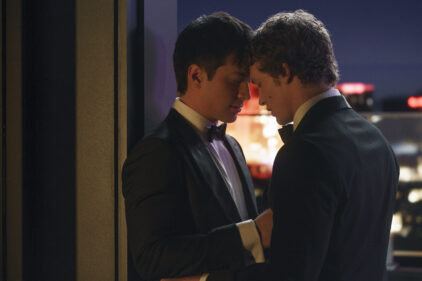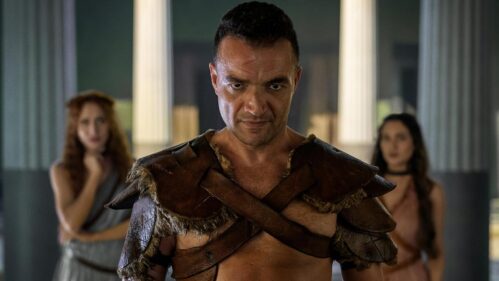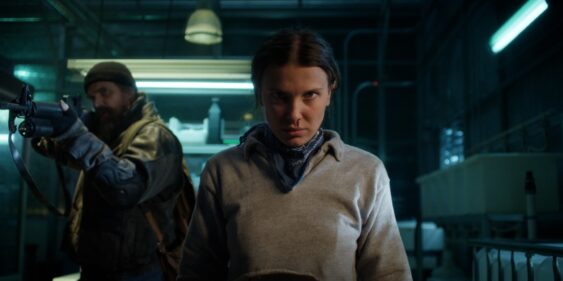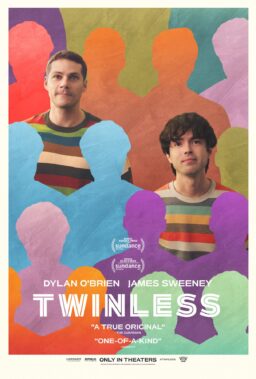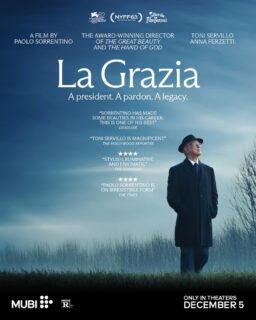I recently had a chance to write about my favorite modern
show, “The Sopranos,” the foundation for the current Golden Age of television,
and another home entertainment release now allows me the opportunity to share a
few opinions on a program that I hold just as dear that happened to come on the
air when Tony Soprano’s creator was merely a child: “The Twilight Zone.” It’s
not only one of the most timeless shows ever produced—its best episodes have
lost none of their power over five decades later—its influence stretches
across dozens of your favorite programs from “The X-Files” to “Lost” to even
“The Walking Dead.” If “The Twilight Zone” had run only one season, it would
still be breakthrough, landmark television. In that first year, Rod Serling
took the frustration he felt at the hands of censors unwilling to let him deal
with social issues the way he wanted to in sponsor-driven TV drama, and he
threaded them through what was perceived as lower-brow genre television. In
doing so, he elevated the form, using science fiction to comment on our present
as much as provide visions of our future. And he grounded television as a
writer’s form. The reason we know showrunners, the reason named like David
Chase and Damon Lindelof and Shawn Ryan matter, is because of pioneers like Rod
Serling, who ran every aspect of his program, imbuing it all with his perfectly balanced ability to entertain and intellectually provoke simultaneously.
Now, fans of “The Twilight Zone” can own not only the
Serling original series but the ‘80s reboot in one massive DVD set called “The Twilight Zone: The 5th Dimension,” limited to 7,500 numbered copies,
and containing 41 DVDs of “Twilight Zone” wonder. All 225 episodes, more than
20 hours of bonus material, one of four possible collectible 1960s “Twilight
Zone” comic books and limited edition packaging with 3D black and white
lenticulars to really allow it to pop on your shelf. It’s a pricy set, but it’s
also one of the best TV on DVD sets of the year. The Blu-ray releases of the
original series from Image Entertainment from a few years ago were
stunning—with better transfers than this standard-only release, for sure—but
this set is more complete, allowing fans to really have one collector’s item on
their shelf, and a chance to reappraise some of the quality work that went into
the reboot series as much as the original.
Back to the original. When Rod Serling wrote “The Time
Element” in 1958, he was frustrated by the way network executives, driven
almost solely by sponsor needs, were controlling his visions. Despite being an
Emmy winner, and already well-recognized voice in television, “The Time
Element,” about a man trying to stop Pearl Harbor, was ignored by the execs,
sold cheaply to Desi Arnaz’s company and aired as a part of “Desilu Playhouse.”
It was a hit, allowing the production of “The Twilight Zone” to commence with
one of the most resonant pilots to this day, the phenomenal “Where is
Everybody?,” about a man who wakes to find himself alone in the world. How
relatable. How attuned to natural human fears of isolation. Over the course of
that first season, Serling would do it again and again—taking elements that we
can all understand and turning them into escapism. The gorgeous nostalgia for
better days in “Walking Distance.” The paranoia, especially vibrant in the era
of nuclear proliferation, of “The Monsters Are Due on Maple Street.” The sense
that we should be careful of that we wish for in “Time Enough at Last.” Serling
presented relatable, downtrodden heroes, often dealing with their inner demons
externalized. We took the journey to the 5th dimension with them
because we could understand the emotional path that took them there.
The twists and ingenious plotting of “The Twilight Zone”
often get noted, but viewers don’t equally appreciate the filmmaking going on
here. With great lead performances, often by character actors of the day, some
of the best episodes of “The Twilight Zone” also include some of the best
acting of the era. And watch again the way Serling and his remarkably talented
rotation of regular directors play with POV (especially in something like “Eye of the Beholder”), canted angles and, especially,
Bernard Herrmann’s phenomenal scores. “Walking Distance” is a work of art that
might better convey regret over lost childhood than anything ever on television.
Heck, “Where is Everybody?,” the very first episode, could be studied for the
way it builds from confusion to tension to outright fear. What its copycats never understood, those shows that focuses more on the twist than the craft, was that Serling’s show never cut artistic corners. It didn’t just rely
on the twist, as so many inferior anthology programs would do in the future.
The twist was often just an element of the art, which is why we can watch these
episodes again even when we know the end of classics like “Eye of the Beholder”
and “To Serve Man.”
When the feature film was a hit, CBS chose to revive the
series in the mid-‘80s, and I honestly dismissed that short-lived return as a
footnote. While it’s not the force of the Serling original, there’s more to
appreciate here than you may remember. Take the pilot, written by Harlan Ellison,
directed by Wes Craven, and starring Bruce Willis. Called “Shatterday,” it’s
about a man who calls home only to have his alter ego answer the phone. It’s a
clever piece of entertainment that could still work today. A lot of the ‘80s
series feels rushed—the sense of artistry isn’t there like in the original
series—but every few episodes produces a standout.
The set includes hours of bonus features, much of them
imported from other releases, although it doesn’t contain the breadth of
material available on the Blu-rays, which included dozens of radio version of
the original series scripts and other very rare special features (although it
does import dozens of commentaries that were previously only available on
Blu-ray). This set is more focused on the episodes themselves, designed for
collectors. Having said that, the most interesting new piece of bonus material
is a pair of special features about the legacy of the show that includes
interviews with Rod Serling’s daughter about his history with it and major voices
in genre entertainment like Craven, Joe Dante, Brannon Braga and J. Michael
Straczynski.
Rod Serling made television that still resonates and still
influences today. We like to look to recent programs like “The Sopranos” and
“Breaking Bad” when we discuss the modern concept that TV can be art. TV was
art over a half-century ago, in a place we like to call “The Twilight Zone.”


